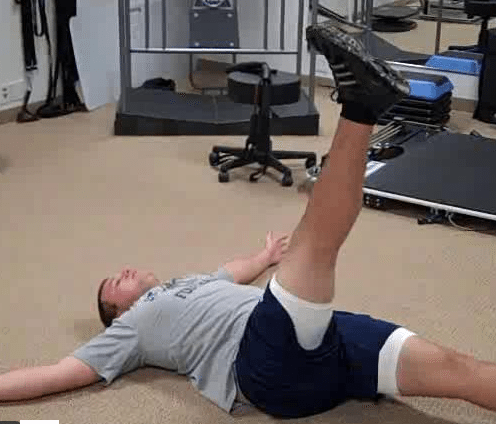As the Functional Movement Screen (FMS) continues to grow more popular, many people are looking for suggestions for corrective exercises based on someone’s FMS results. My friend Joe Heiler, who runs the SportsRehabExpert website that I am quite fond of, has a great guest post this week on some of his favorite corrective exercises. The post below is actually an exert from one of his many great articles at SportsRehabExpert.com, but he was kind enough to let me post it here. I think this is a great example of some of the amazing content that Joe has on his site.
If you are not familiar with Gray Cook’s Functional Movement Screen, you can read more about it from the official website, or check out Joe’s SportsRehabExpert.com website, as it has tons of great clinical examples of how to perform, interpret, and integrate the FMS and corrective exercises into your practice.
FMS Corrective Exercises
This week I wanted to post two of my favorite ‘core’ corrective exercises from the FMS that address the active straight leg raise and rotary stability patterns. If I could ever get my online account to work for the Journal of Bodywork and Manual Therapy I want to post Lederman’s article “The Myth of Core Stability” to open up some debate. He is definitely not a proponent of voluntary pre-activation of the abdominal muscles or core stability programs in general. Long story so I want to post it, but the take home in the end for me was that the more we can be quiet and let the patient figure it out for themselves, the more natural (or reflex) the effect. Not too far off from what Gray Cook has been saying as well as the Prague School folks.
So back to the FMS corrective exercises. I want to introduce the Unsupported Active Straight Leg Raise and the Anti-Rotation Frontal Plane Leg Lowering corrective exercises. I really like these two corrective exercises for a few reasons and especially in certain situations:
- They both give the patient the chance to ‘figure it out’
- They are a lot harder than they look
- I’ve had quite a few athletes post-ACL reconstruction lately, some non weight bearing due to meniscal repair, so these corrective exercises have been great additions to their program.
- With the post-surgical athletes, I want to address as many of the SFMA/FMS patterns as I am able right away so when it comes time to single leg squat, run, jump, etc I’m not wasting time trying to cue athletes out of a valgus collapse. I’ve already addressed the ‘core’ and hip mobility/stability issues through corrective exercises.
What you don’t want to do is coach the patient on how to contract/brace/hollow, or where, or when, or anything else like that. Let them figure out how to move their limbs keeping a stable base.
FMS Corrective Exercises – Unsupported Active Straight Leg Raise
The below video shows the unsupported active straight leg raise corrective exercise for the active straight leg raise component of the functional movement screen.
Some pointers:
- Clear the Active Straight Leg Raise first to utilize a full range of motion. If not, you will need to limit the motion (i.e. lower the leg to a box instead of the ground). You can do this no problem if you are dealing with a hip flexion/extension mobility issue but not if it is an obvious core instability limiting hip separation.
- Instruct them to keep the non-moving leg vertical. Its nice if the athlete can maintain full extension on both legs but really I only cue it on the leg being lowered to get max hip extension.
- If the non-moving leg will not remain vertical then you know they are losing stability at that moment. The non-moving leg may flex at the knee slightly but the femur should remain vertical.
- Will often let them use their hands to press into the floor to get them started doing it right. You can see in the video his arms are out and palms up so he can’t do much to help from there.
FMS Corrective Exercise – Anti-Rotation Frontal Plane Leg Lowering
The below video demonstrates the anti-rotation frontal plane leg lowering corrective exercise for the rotary stability component of the functional movement screen.
Some pointers:
- Instruct them to keep the non-moving leg vertical. A likely compensation is to let that leg move further laterally as a counter weight to the leg being lowered.
- My other instruction is to keep the belly button facing the ceiling at all times. Simple as that.
- Will often let them use their hands to press into the floor to get them started doing it right. From there go palms up, and then go to no hands at all.
Rotary Stability is a difficult pattern to correct so get the athlete rolling and work this correction in between sets and you’ll be surprised what a difference they make.
Thanks Joe for the great contribution. If you are not familiar with SportsRehabExpert.com, the Functional Movement Screen, or corrective exercises, you are really missing out – Joe’s website is outstanding and I am always on there learning new things.






